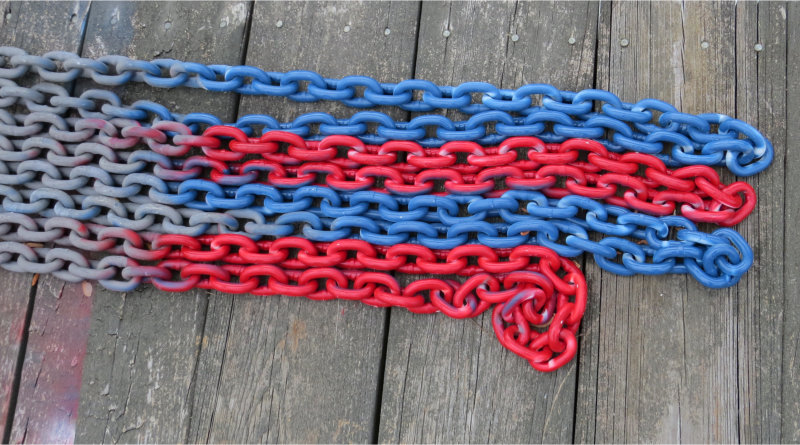Back in the early 90s, my father bought a new Sea Ray 400 Express Cruiser. I distinctly remembered being excited to operate the Good Free Windlass without supervision, but more importantly, I remember the line on that anchor was dyed different colors every 25 feet.
Fast forward to 2017, and my brand new Formula had a chain counter at the helm. It might have been my favorite feature on that boat.
After she was traded for another boat in 2019, I was back to an all-chain rode but no clue how much was out unless I counted the seconds of windlass operation and multiplied them by line speed (in my case, roughly 1.6′ per second.)
Over the winter, I remembered that trusty Good Windlass and its rode of color, so I decided to do the same to my boat.
Here’s my shopping list:
1) Three cans of Rust-Oleum (plain ol’ Gloss Protective Enamel) in Red, Yellow, and Blue.
2) Distilled Vinegar
3) Metal Wire Brush
4) About 10 plastic bags (now taxed in most states)
And here’s my process:
1) Let out the rode; make sure you have a lot of space to lay it down for measurement (do this in a garage/warehouse; you’ll want the rode to dry overnight)
2) Measure off the intervals you want to paint (in my case, I did 10′)
3) Scrub 6″-8″ of chain at each interval with a wire brush, and then dump vinegar on that section (this helps the paint stick; you could also get a more official metal primer)
4) Once dry, put those sections into a plastic bag
5) Stick the nozzle of a paint can into the bag and spray like hell
I applied 4 coats on each section: the first one (obviously), a second one after 2-3 hours, a third one after another 2-3 hours, and then a final one the next day (it takes an overnight for the paint to cure).
Strongly recommend doing this in a garage to keep debris from being blown onto your drying paint, and you’ll need to leave everything out overnight.
My color strategy was inspired by learning about wavelengths in Sophomore chemistry: ROYGBV. So, red first, then yellow, then blue. And then it repeats.
Hopefully the deckhand is astute enough to monitor when the next cycle of colors start pouring out of the windlass.
The could be the most stress-reducing project for a whopping $15.

No Responses